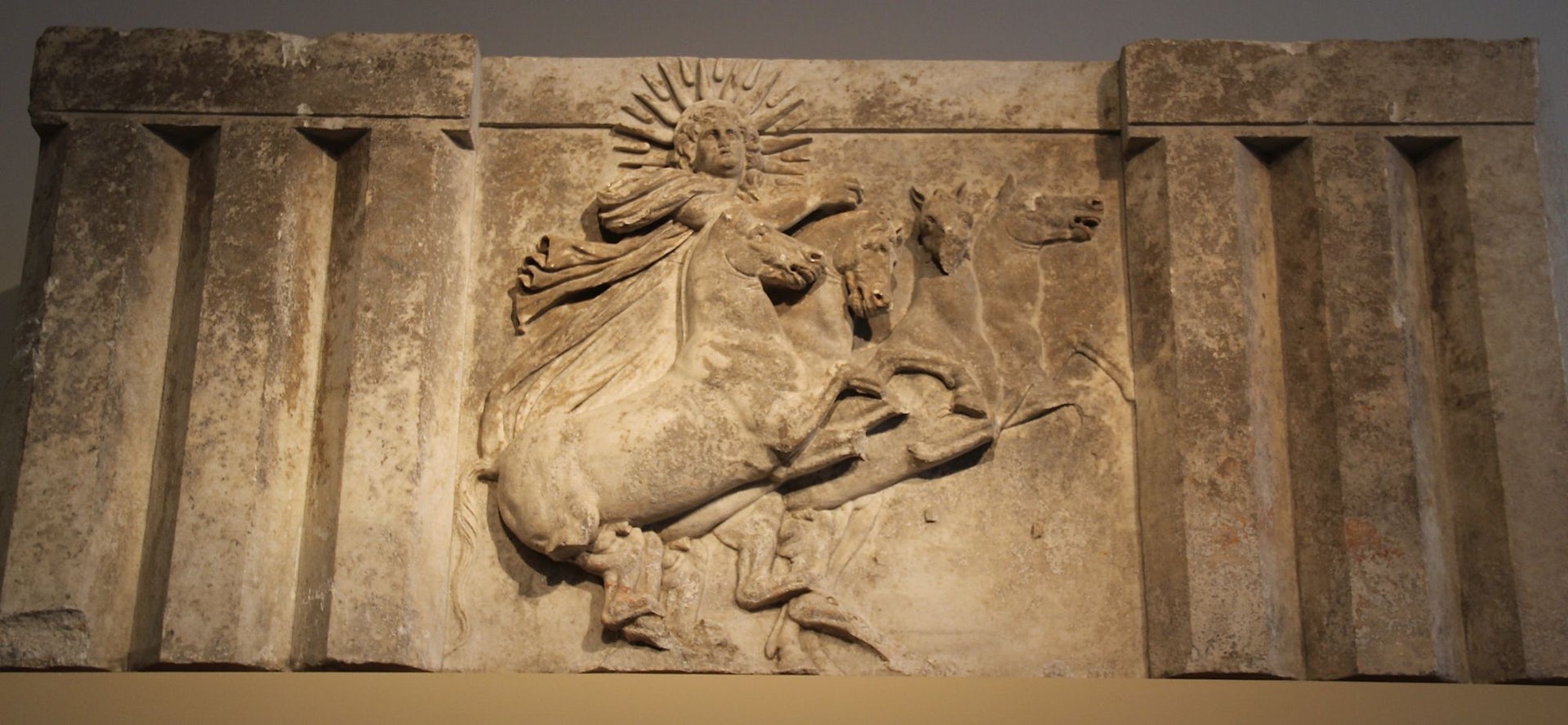Hyperion

Hyperion, father of the celestial gods Helios, Selene, and Eos, was closely associated with the heavens and sometimes considered the first astronomer. Up (2017).
Stacey Gabrielle Koenitz RozellsUnsplashOverview
One of the twelve Titans of Greek mythology, Hyperion was the father of Helios, Selene, and Eos—the gods of the sun, moon, and dawn, respectively. He was sometimes said to have participated in Cronus’s rebellion against their father Uranus, and helped to establish his brother as ruler of the cosmos. In time, the Titans were supplanted by Zeus and the Olympians and consigned to the most dismal part of the Underworld, known as Tartarus.
Etymology
The name “Hyperion” (Greek Ὑπερίων, translit. Hyperiōn) was derived from the ancient Greek word meaning “high one.” Despite this lofty title, Hyperion does not appear to have ever held a position of power in the Greek mythos. His name may instead allude to his association with the heavens.
Pronunciation
English
Greek
Tartarus Ὑπερίων (translit. Hyperiōn) Phonetic
IPA
[hahy-PEER-ee-uhn] /haɪˈpɪər i ən/
Attributes
Hyperion was so closely associated with heavenly bodies that his children Helios and Selene were thought to embody the sun and the moon, respectively. The historian Diodorus of Sicily, probably inspired by this association, made the rationalizing claim that Hyperion was the first to study and comprehend astronomical phenomena.[1] While Hyperion’s connections with the heavens are well documented, little else is known about him.
Family
Hyperion was the son of Gaia, the incarnation of the earth, and Uranus, the embodiment of the heavens. His siblings included the other Titans—Coeus, Crius, Iapetus, Mnemosyne, Oceanus, Phoebe, Rhea, Tethys, Thea, Themis, and Cronus—as well as more monstrous brethren, such as the one-eyed Cyclopes and the hundred-handed Hecatoncheires. Despite their familial connections, these monsters were feared and reviled by the Titans.
Family Tree
Mythology
Much of Hyperion’s mythology has been lost to time. In Hesiod’s Theogony, he was mentioned only in relation to other Titans or as the father of other gods:
And Theia was subject in love to Hyperion and bare great Helius (Sun) and clear Selene (Moon) and Eos (Dawn) who shines upon all that are on earth and upon the deathless Gods who live in the wide heaven.[4]

Marble relief showing the sun god Helios with rays of sun as a crown (ca. 300 BCE). Helios' mother Thea was often associated with heavenly bodies and other forms of light.
Gary ToddCC0Hyperion is also mentioned in Homer’s epics (as Helios’ father) and in a handful of other ancient works, though these appearances did little to expand his mythos.
There is little to no information on Hyperion’s role in the Titanomachy, the ten-year war between the Titans (led by Cronus) and the Olympians (led by Zeus). At the end of the war, the Olympians cast the defeated Titans into Tartarus. Yet Hyperion’s actions during the conflict, and his eventual fate, are uncertain.[5]
Pop Culture
Hyperion has appeared in many popular representations of Greek mythology. In the eighteenth and nineteenth centuries, for example, he inspired works by Johann Hölderlin and John Keats.
In the video game God of War: Chains of Olympus (2008), Hyperion is one of several Titans chained up in Tartarus. He also appears in the seventh episode of Xena: Warrior Princess and is a recurring character in Rick Riordan’s Percy Jackson and the Olympians series.
Hyperion was further appropriated by novelist Dan Simmons for his science-fiction/fantasy series The Hyperion Cantos. With novels including Hyperion and The Fall of Hyperion, the series centers on the fictional planet of Hyperion, a place of pilgrimage in an intergalactic civilization threatened by war and chaos.
One of Saturn’s many moons is named for Hyperion. Discovered in 1848, it is unique due to its lopsided shape and irregular orbit.